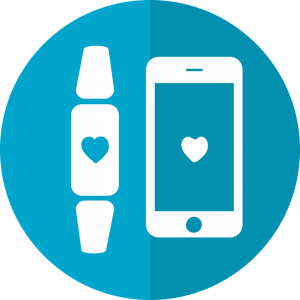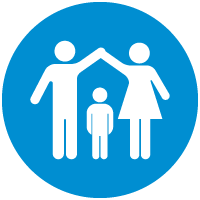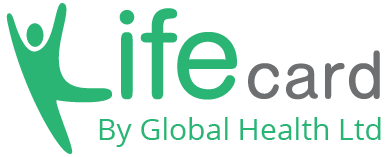Wearable technology and health apps are transforming the way patients access healthcare
 Going to the doctor will never be the same thanks to the development of new Digital Health innovations, and patients are better for it. Thanks to the rapid growth of the eHealth sector, there has been a huge amount of research conducted to examine whether Teleconferencing, remote monitoring and digital health records actually enhance patient outcomes, and the results are overwhelmingly positive.
Going to the doctor will never be the same thanks to the development of new Digital Health innovations, and patients are better for it. Thanks to the rapid growth of the eHealth sector, there has been a huge amount of research conducted to examine whether Teleconferencing, remote monitoring and digital health records actually enhance patient outcomes, and the results are overwhelmingly positive.
Bio-sensing wearable technology will help save you time at the doctors
Heading to the doctor’s office and being whisked away by the nurse for endless tests can be time-consuming and expensive. Today, your health professional can access a ton of your health data via apps and technology instead. Aussies are loving wearable technology, with studies finding those using wearable tech has increased significantly between 2016 and 2018.
While the term bio-sensing wearable may sound like a term from the future, the study above and the popularity of the Fitbit shows wearables are on the rise. From fitness bands to digital hearing aids, blood pressure monitors and even ingestible pills that monitor your body’s response to medication, wearables allow your health professionals to see your health data in real time.
Wearable tech allows your doctor to make your care more personalised
Seeing a doctor for a quick 20-minute appointment can leave you wishing for more time to convey what you want from them, and tell them more about your problem. Thanks to wearable technology though, your body’s responses to medication, new insoles, or a new exercise program are recorded and your doctor can access the app’s results immediately. This allows them to see if their treatment plan is working how they hoped, and if not, to tailor it more specifically. Without these metrics, your doctor relies on your recollection of symptoms, and can only do so much in the 20-minute allotted time for your appointment.
If you live remotely and can’t make it to the clinic, your health professional can access your data and conduct your appointment via Teleconference. This gives patients access to personalised care from the comfort of their own home.
eHealth helps patients with chronic illness better understand and adhere to treatments
![]() People with chronic illnesses such as asthma, COPD, arthritis, diabetes or heart disease often struggle to maintain their home treatment plans. One of the main reasons for this is because they don’t understand why they’re doing what they’re doing, and have no way to see if it’s really working except for an infrequent check-up at the doctors.
People with chronic illnesses such as asthma, COPD, arthritis, diabetes or heart disease often struggle to maintain their home treatment plans. One of the main reasons for this is because they don’t understand why they’re doing what they’re doing, and have no way to see if it’s really working except for an infrequent check-up at the doctors.
With new health apps, patients can see their results from tests like spirometry or blood glucose results on their own phones. By being able to access this information, new research shows patients are more motivated to stick to their treatment program, steering them towards better outcomes and elevated health.
A great example are patients with COPD who use remote spirometry. When a UK-based program enable COPD patients to use technology to monitor their illness, the patient results were impressive. They recorded:
- 97% patient satisfaction
- 62% increased confidence
- 94% better treatment compliance
Fitness apps and activity trackers encourage people to maintain their health goals
The 10,000 steps per day challenge is incredibly popular since the invention of fitness tracker apps and devices, and it’s just one of the many popular benchmarks people have begun measuring. In fact, one study found the number of Aussies using mobile devices to manage their health increased from 30 to 47% between 2016 and 2018.
With fun graphics, audio-integration with kind motivation, and easy-to-use settings, fitness trackers are one of the best ways to keep you and your family engaged and motivated to exercise. Whether you want to run a 5km race, or you’re trying to maintain 30 minutes of exercise per day, activity trackers record your activity level so you can see exactly how far you’ve walked or run, and even see your heart rate.
Most great activity trackers will also provide graphs and summaries, helping you clearly see your progress over time. Activity trackers come in the form of watches, rings, necklaces or simple apps that work via Bluetooth to connect to your phone, and monitor distance covered and your speed.
 Digital Health Records make parenting easier
Digital Health Records make parenting easier
Parents have to juggle enough, and it’s too much to ask that they recall the exact dosage of asthma medication or the number of colds their little one has had this winter off the top of their heads. With the invention of digital health records, family health data can be stored securely in one place, saving parents from having to recall details or carry reams of paper and old prescription documents to medical appointments.
For those families who co-parent, Digital Health Records make a visit to the doctor much more streamlined for both parents too. Folders don’t need to be passed between parties as the child’s full history is recorded in one place, allowing children to have a smooth visit to the doctor no matter which parent they are staying with.
Digital health records also help health professionals give children better care, providing immediate access to a patient’s family history, which helps prevent inaccurate medication prescription and gives urgent allergy information.
From wearables to Telehealth appointment and digital health record apps, the worlds of digital and health have become forever merged. Not only does this make life easier for patients, it provides better health outcomes too.


